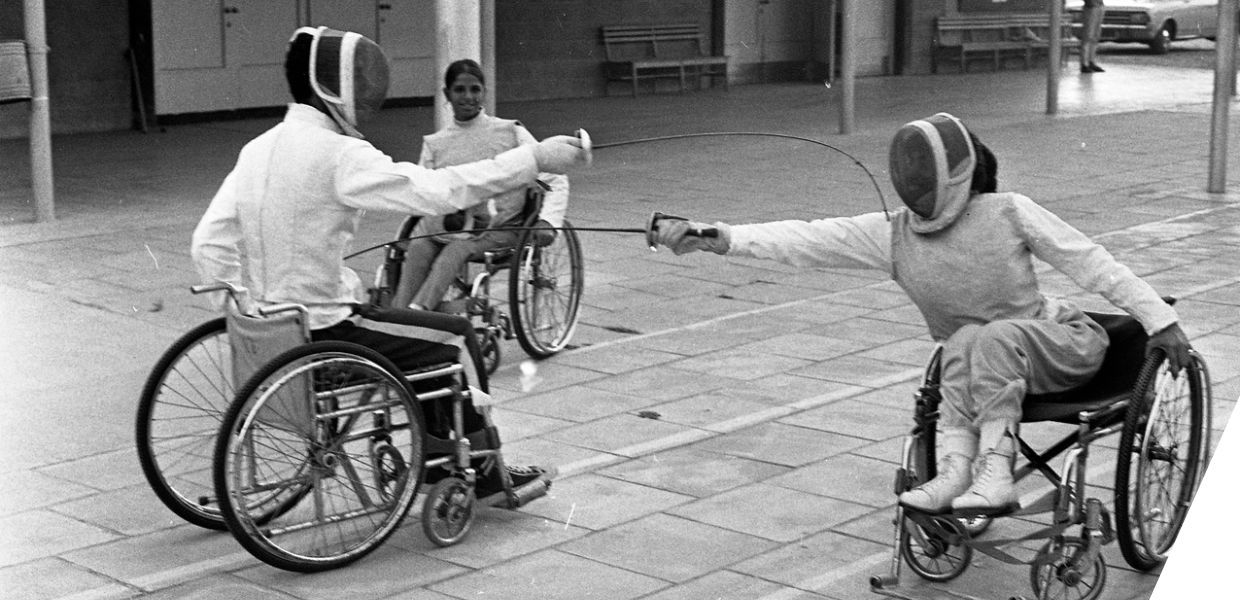Digital technology can often be seen as a solution to access problems for people with disabilities. Information is available wherever you are, without the need to travel or to deal with inaccessible old buildings, or busy and noisy public spaces, for example.
But digital isn’t accessible by default. The Europeana Initiative works hard on developing its websites (Europeana.eu and Europeana Pro) to meet international web accessibility standards, so that people can use them via keyboard controls or screenreaders, for example. And there are a lot of things that cultural institutions can do to improve accessibility of their digital offerings for people with disabilities.
What can you do to find out more about how people with disabilities experience and participate in cultural heritage, both physically and digitally, and how disabled experiences are represented within cultural collections themselves? And what can you do to support Disability Pride yourself?
How you can take action today
1.Explore disability stories, narratives and heritage from Europe and beyond on the Europeana website.
From names you know like Beethoven and Frida Kahlo, to those you might not, such as Dutch tennis player Esther Vergeer and British-Nigerian artist Yinka Shonibare, we hope you will learn something new and be inspired. Find something you like? Let us know and share it on social media. Explore
And you can contribute to Europeana's disability heritage material with Europeana Transcribe's 'Story of the month' for July 2023. Europeana Transcribe offers you the chance to make lesser-known disability stories more visible and accessible through a special collection. We invite you to transcribe and enrich a selection of letters, photographs, and documents written by and about soldiers with disabilities. Contribute
2. Share a story!
If you’ve got a story to tell about disability heritage, then send us your proposal for a blog and it could be featured on Europeana.eu. Our editorial grants programme provides €200 funding for writers to contribute blogs that put a spotlight on underrepresented communities, voices and lived experiences. Share your story
3. Check out some resources and put them into practice.
The Disability Collaborative Network provides heritage organisations with resources, information and best practice on inclusion and disability. They have a dedicated section sharing toolkits, videos, reports and information around digital inclusion which they say ‘should be at the core of every museum and heritage organisation, no matter size, budget or stakeholders’.
Watch the film ‘Everywhere and nowhere’ - a collaboration between the National Trust and the University of Leicester’s Research Centre for Museums and Galleries that explores little known and previously untold histories of disability from across Trust sites and collections, and have a look at the project’s Guidance for ethically researching and interpreting disability histories.
Explore Studio Inclusie, a Dutch initiative from the Stedelijk Museum Amsterdam and Van Abbemuseum (Eindhoven) which looks to inspire and inform on how to make the cultural sector inclusive and accessible. They offer tools and articles on the subjects in both Dutch and English.
The examples shared here are mostly UK-based but their resources are valuable globally. Are there similar organisations in your country? Please share them with us on social media - tag @Europeanaeu!
4. Use social media to explore and share.
Follow #DisabilityPrideMonth to see what’s going on this month, and follow organisations that are active all year around. Here are some places to start:
Disability Collaborative Network - @museumDCN - resources and toolkits for heritage organisations
VocalEyes @VocalEyesAD - bringing art and culture to life for blind, partially sighted and non-blind people, with training on creating audio guides and audio description.
TravelEyes @TraveleyesLtd - a tour operator providing independent group travel for people who are blind or partially sighted, including accessible tours of heritage destinations, such as the Guggenheim Museum and Maritime Museum in Bilbao, Spain, or the Wieliczka Salt Mines and Auschwitz-Birkenau and Memorial Museum in Poland.
Upgrade Accessibility @upgradeaccessibility - raises awareness about physical access - or lack of it - as well as disability rights, disability justice, racial justice, equity and more.
Diversability @diversability - a community of people with disabilities (and allies), on a mission to elevate disability pride, together
Curating for Change @Curating4Change - creating placements and career paths for D/deaf, disabled and neurodiverse people to lead in museums. Funded by the UK's National Lottery Heritage Fund.
The Sensational Museum @SensationalMus - aims to rethink the role and place of the senses in the museum.
5. Watch the Multisensory Storytelling session from this year’s Digital Storytelling Festival!
Have you ever heard a speaker introduce themselves by telling you about the perfume they’re wearing? Sofia Colette Ehrich does this as she shares best practices and challenges of using digital-olfactory storytelling in museums from her experience with Odeuropa’s City Sniffers: a smell tour of Amsterdam’s eco-history. She says, ‘Many say that with digital approaches, our museums are becoming more accessible, interactive, engaging and multi-sensory. I’m here to question this and raise urgency to this easy assumption.’
The session also hears from Ellie Coleman from the Royal Albert Memorial Museum who talks about partnering with disability organisations and a sound artist to create a series of audio tracks to support museum visitors’ journeys around the museum in a creative and playful way. Ellie says the project was designed to ‘normalise, highlight and celebrate the experience of people with disabilities.’ Watch
6. Find out how the institution you work for, or one you could volunteer with in your local area, supports access and participation for people with disabilities.
How could you get involved? Is there a person or a team dedicated to accessibility and inclusion?
Don’t keep what you’ve learned to yourself! Tell your colleagues, friends and family, and tell us - share with #DisabilityPrideMonth and tag @Europeanaeu.


